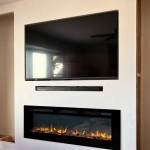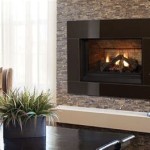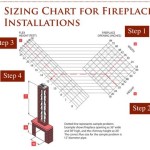Installing a Stacked Stone Fireplace: A Comprehensive Guide
A stacked stone fireplace can transform a living space, adding a touch of rustic elegance and natural beauty. The process, while achievable for a seasoned DIY enthusiast, requires careful planning, precise execution, and a commitment to detail. This article provides a comprehensive guide to installing a stacked stone fireplace, covering preparation, material selection, and installation techniques.
Before embarking on this project, it's crucial to assess the existing fireplace structure. Modern fireplaces often have adequate framing and fireproofing, but older structures might require significant upgrades before stone can be applied. Consult with a qualified contractor or structural engineer to ensure the fireplace complies with local building codes and safety standards. This initial assessment will save time and money in the long run by identifying potential problems early on.
Safety considerations are paramount throughout the entire installation process. Wear appropriate personal protective equipment (PPE), including safety glasses, gloves, and a dust mask or respirator, especially when cutting or mixing mortar. Ensure adequate ventilation to avoid inhaling harmful dust or fumes. Furthermore, familiarize oneself with the safe operation of power tools, such as angle grinders and tile saws, before commencing work.
Key Point 1: Preparatory Steps and Material Selection
The success of a stacked stone fireplace installation hinges on thorough preparation. This includes surface preparation, selecting the appropriate stone and mortar, and gathering all necessary tools and materials.
Surface Preparation: The surface to which the stacked stone will be applied must be clean, sound, and properly prepared. Existing paint, wallpaper, or loose debris should be removed. This often involves scraping, sanding, or even using a chemical stripper. For concrete or masonry surfaces, a wire brush can be used to remove any efflorescence or loose particles. A clean surface ensures proper adhesion of the mortar.
If the existing fireplace surround is constructed of a different material, such as drywall or wood, it will need to be properly prepped to accept mortar. This typically involves installing a cement backer board, such as HardieBacker or Durock. Cement backer board is water-resistant and provides a stable, durable surface for the mortar to bond to. The backer board should be attached to the existing framing with screws specifically designed for this purpose, ensuring that it is flush with the surrounding surface.
Stone Selection: Stacked stone is available in a wide variety of colors, textures, and sizes. Natural stone, such as slate, quartzite, and limestone, offers unique variations and a more authentic look. Manufactured stone, also known as cultured stone, is a lighter and more cost-effective alternative that mimics the appearance of natural stone. Consider the overall aesthetic of the room and the desired style of the fireplace when selecting the stone. Order slightly more stone than calculated to account for cuts and waste.
When choosing between natural and manufactured stone, consider the weight limitations of the fireplace structure. Natural stone is significantly heavier than manufactured stone, and the fireplace may require additional structural support to bear the extra weight. The manufacturer's specifications should be consulted to determine the weight per square foot of the chosen stone.
Mortar Selection: The type of mortar used is crucial for a strong and durable bond. A polymer-modified mortar is recommended for stacked stone applications. These mortars contain polymers that enhance adhesion, flexibility, and water resistance. Choose a mortar specifically designed for stone veneer applications. Carefully follow the manufacturer's instructions for mixing and application.
Tools and Materials: In addition to the stone and mortar, several tools and materials are required: a level, a trowel, a mortar mixing tub, a margin trowel, a grout bag, a sponge, a utility knife, a wet saw or angle grinder with a diamond blade (for cutting stone), a measuring tape, safety glasses, gloves, a dust mask or respirator, and a cement backer board (if needed). Having all necessary tools readily available will contribute to a smoother and more efficient installation process.
Key Point 2: Stone Layout and Installation Techniques
Proper layout and installation techniques are essential for achieving a visually appealing and structurally sound stacked stone fireplace. A well-planned layout ensures a balanced and aesthetically pleasing design, while correct installation prevents the stone from loosening or falling off over time.
Dry Layout: Before applying any mortar, dry-lay the stone on the floor to determine the desired pattern and arrangement. This allows for visualizing the final appearance and making any necessary adjustments to the stone placement. Experiment with different stone combinations and orientations to achieve the desired look. Consider the size and shape of individual stones and how they will interact with each other.
The dry layout also helps identify any stones that need to be cut to fit around corners, edges, or other architectural features. Mark the cutting lines on the stone with a pencil and use a wet saw or angle grinder with a diamond blade to make precise cuts. Always wear safety glasses and a dust mask when cutting stone.
Mortar Application: Once the dry layout is finalized, begin applying the mortar to the back of each stone. Use a notched trowel to create ridges in the mortar, which will provide a better bond with the backer board or existing surface. Apply enough mortar to ensure full coverage but avoid applying so much that it squeezes out between the stones when they are pressed into place.
Press each stone firmly into place, ensuring that it is level and aligned with the surrounding stones. Use a level to check the horizontal and vertical alignment of each stone. Avoid applying excessive pressure, which could damage the stone or create air pockets in the mortar. Maintain consistent spacing between the stones to achieve a uniform and professional appearance.
Grouting: The spacing between the stones can be left open for a more rustic appearance or filled with grout. If grouting is desired, allow the mortar to cure for at least 24 hours before applying the grout. Use a grout bag to carefully fill the spaces between the stones with grout. Avoid getting grout on the face of the stone, as it can be difficult to remove. Once the grout has partially dried, use a damp sponge to clean any excess grout from the surface of the stone.
Cutting Stone: This requires precision and safety. Use a wet saw for straight cuts, especially with thicker stone. Ensure a constant water supply to cool the blade and minimize dust. For curved or irregular cuts, an angle grinder with a diamond blade is more suitable. Always wear safety glasses and a dust mask when cutting stone, regardless of the tool used.
Key Point 3: Detailed Tips and Troubleshooting
Even with careful planning and execution, challenges can arise during a stacked stone fireplace installation. This section addresses common issues and provides practical tips for resolving them.
Maintaining Consistent Spacing: Achieving uniform spacing between the stones is crucial for a professional-looking result. Use shims or spacers to maintain consistent spacing while the mortar cures. These can be small pieces of wood, plastic, or even cardboard. Remove the shims or spacers once the mortar has set sufficiently.
Dealing with Uneven Surfaces: If the existing surface is uneven, it can be challenging to install the stacked stone in a straight and level manner. Use a leveling compound to smooth out any irregularities in the surface before applying the backer board or mortar. This will provide a more stable and even base for the stone.
Preventing Mortar Sag: Mortar sag can occur if too much mortar is applied or if the stone is too heavy. To prevent mortar sag, apply the mortar in thin layers and ensure that the stone is properly supported until the mortar has cured. Use shims or temporary supports to hold the stone in place if necessary.
Cleaning Mortar Haze: Mortar haze, a thin film of mortar that can appear on the surface of the stone, can be removed with a mild acid solution. However, it is crucial to test the solution on an inconspicuous area of the stone first to ensure that it does not damage the surface. Follow the manufacturer's instructions carefully when using any cleaning products.
Addressing Cracking: Cracking in the mortar or stone can be caused by several factors, including improper mortar mixing, inadequate surface preparation, or excessive movement of the fireplace structure. If cracks appear, they should be repaired promptly to prevent further damage. Use a flexible sealant or mortar to fill the cracks.
Sealing the Stone: Sealing the stacked stone can help protect it from moisture, stains, and fading. Choose a sealant specifically designed for stone and follow the manufacturer's instructions for application. Sealing is particularly important for natural stone, which is more porous and susceptible to damage.
Finally, it's helpful to photograph each stage of the process. This documentation serves as a valuable reference point if questions or issues arise later. It also allows for a detailed comparison of the intended design with the actual progress, ensuring that the installation remains on track.
.jpg?strip=all)
Tips And Tools For Professional Stacked Stone Fireplaces

How To Build An Outdoor Stacked Stone Fireplace

12 Stacked Stone Fireplace Ideas For Optimal Coziness

Tips And Tools For Professional Stacked Stone Fireplaces

Diy Stacked Stone Fireplaces On A Budget Msi Blog

Stacked Stone Fireplace How To Diy

12 Stacked Stone Fireplace Ideas For Optimal Coziness

Tips And Tools For Professional Stacked Stone Fireplaces

How To Install Stack Stone Tile On Fireplace Cement Board Installation

Thin Stone Veneers Make A Fireplace Update Easy
Related Posts








